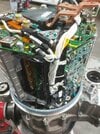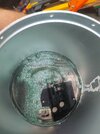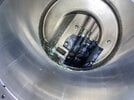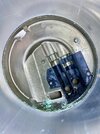For fix longevity, the question is can it last say 50-100k miles? I'm avoiding Tesla repair in answering this question based on the following reasons:
1. We have no evidence Tesla's DU has changed to the earlier longer lasting triple lipped coolant seal over the recent leak prone single lip seal.
2. Tesla doesn't add any kind of drain path or coolant barrier to the inverter. Guys like
@ajbessinger are experts, I'm a reasonable DIYer. This forum include mix of pros and many non DIYer. Attached a over simplified schematic diagram for reference for non DIYer on explaining the operation and failure mode. I'll assume the potential Tesla cease and desist risk for now haha.
So regardless of Tesla's price or 4yr/50k warranty, I'm betting it will leak soon after but most probably low enough that it takes 10-30k miles to build enough volume to trash various components.
IMHO, QC Charge is light years ahead of Tesla on assessing and improving longevity of design. Whether Tesla can improve the design to meet our replacement schedule AND broadcast to the owner community (I'm guessing unlikely due to potential backlash) is for everyone to decide for themselves.
Of course there is greater difficulty+cost in transporting the car/DU to QC Charge rather than convenient local SC. Pretty much true of the battery failure repairs as well.
Note that LDU coolant leak is not the ONLY post warranty high cost item. The other one is the obviously battery. Contactor and cell/module failure seems fairly common > 100k miles. I believe the costs are like $2-3k ish for contactor and $25k at Tesla ($6k? ish at few indys nationally before transport) for battery cell/module failure to aid in calculating maintenance cost gamble.






